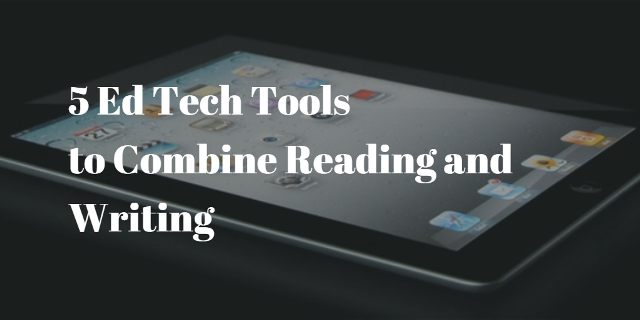Make Reading and Writing More Engaging with these 5 Edtech Tools
Reading and writing are two of the most fundamental skills for students to learn, however, many ed tech tools segregate the two, focusing on just reading or writing. When you combine the two together, into one app or tech tool, you get a powerful combination that prepares your students for success.These five tech tools are some of the only ones available that combine these two successfully, providingan engaging and educational experience for students. Bring them into your classroom and empower your students to read more and write better.
While reading blog posts aren’t considered a traditional method of reading, it’s one that’s becoming more and more popular for everyone, kids and adults alike. Allowing students to both read and write within the blogging medium not only gets them excited to learn but prepares them for a digital future. Many writers in your classroom may end up as professional bloggers or web content producers, and this classroom experience may be what steers them in that direction.
With Kidblog, a safe and simple blogging platform for the classroom, students can write their own blog posts, spend time reading their peers’ posts, and comment on them to start a discussion. This is a great tool for free reading and writing time; use these 50 creative blog prompts to spark your students’ creativity.
What makes it special: Unlike other blogging platforms, Kidblog is completely education-based. As such, it’s integrated with Google Drive and Google Apps for Education. It also comes integrated with Common Core standards, lessons and unit plans, and allows students to create their own personalized themes.
Whooo’s Reading inspires students to read and write every single day. Being able to earn Wisdom Coins and Badges, and “like” and comment on their peers’ responses in their Facebook-like newsfeed, motivates students to read more than ever before.
With a variety of comprehension question options, including the book review, question response or blog post, students are also excited to write. Not to mention, all of these writing options encourage students to use higher-level thinking. Other important writing features include:
- Teacher scoring
- Immediate and private teacher feedback
- The option to re-write their response for a higher score
- Speech-to-text input option
What makes it special: With this tool, teachers can track student progress, mastery of standards, reading comprehension and writing proficiency. They can also set reading and response goals to keep students on track with their independent reading.
This app, geared toward younger students who are just learning to read and write, does a great job of combining the two in an engaging way. Letter sounds are taught in small groups and include audio and physical cues for learning—students will hear the sounds and can also trace the letters with their finger or a stylus.
The app includes a spelling game and sends and weekly update emails for parents and teachers.
What makes it special: Independent research found that students learn nine times faster using PocketPhonics compared to a classroom lesson, as cited on their website.
While this student-only reading website isn’t directly promoting, nor does it require, student writing, it still encourages it in one special way: students can write book reviews that are seen by their peers in the classroom and around the country. This review writing is what leads to more reading.
Education professionals will agree that reviews from students’ peers are the most influential. With Bookoplis, students have access to thousands of these reviews, in addition to the “Book Quest,” which takes them on a journey to discover their next favorite book.
What makes it special: With Bookopolis, where students are writing reviews that can be seen by students outside of their classroom, students are given an authentic audience to write for.
This e-reader, iOS app is perfect for encouraging students to both read and write on their own time, as opposed to being assigned it. With Gerty, students are able to open ebooks in EPUB format and access a variety of unique features that encourage them to become better readers and writers.
Some of these features include:
- A built-in journal, for writing thoughts while reading
- A timeline for adding definitions they want to learn or look up
- One-tap Dropbox access
- In-book reading timers
- Sound effects
What makes it special: There are dozens of features that can make a significant impact in the classroom, but one that’s especially helpful for students is the daily reading and journaling reminder.
These are a small sampling of a small group of tech tools and apps that bring reading and writing together in an effective and engaging way. Consider bringing them into your classroom, empowering your students to read and write as much as possible. See more recommended classroom ed tech tools here.
Jessica Sanders is the Director of Social Outreach for Whooo’s Reading, a San Diego-based education organization that motivates students to read more every day. It’s available to teachers, schools, and districts. Jessica grew up reading books like The Giver and Holes, and is passionate about making reading as exciting for young kids today as it has always been for her.

